Recent Articles
Popular Makes
Body Types
10 Cars with Boxer Engines

Subaru Boxer Engine ・ Photo by Subaru
Cars with boxer engines are fairly rare in the U.S. auto industry, despite having both packaging and performance advantages compared to vehicles with "V" or "inline" engines. In boxer engines, the cylinders lay flat, with the pistons horizontally opposite each other, so that when the engine is running, they look somewhat like boxers' fists punching at each other. The configuration can lower the center of gravity in vehicles, which in turn helps handling, and they often run smoother, too. Yet the only cars to have them currently are...
2016 Subaru Outback
All-new last year, the 2016 Subaru Outback is considered a crossover by many customers, but if you’re shopping for cars with boxer engines, the Outback is a segment-buster worth seeing. It’s a little longer than the Subaru Legacy midsize sedan with which it shares a platform, trading the Legacy’s shape and trunk for a wagon-esque appearance and a cargo capacity to match: There’s a 35.5-cubic-foot rear cargo hold behind the second row of seats and 73.3 cubic feet in total, with those rear seats folded. The Outback also delivers Subaru hallmarks such as standard symmetrical all-wheel drive, Top Safety Pick+ recognition from the IIHS and a 5-Star Overall Safety Score from NHTSA. Motivating the Outback? Either a standard four-cylinder engine that makes 175 horsepower and 174 lb.-ft. of torque—with EPA ratings as high as 25 mpg city/33 mpg highway/28 mpg combined—or a six-cylinder, 256-horsepower engine that still reaches 27 mpg.

Photo by Subaru
2016 Subaru Legacy
The 2016 Subaru Legacy supplies the same two engines as the Outback, relying on the 2.5-liter, four-cylinder unit as a standard choice and furnishing the 3.6-liter, six-cylinder powerplant as a premium option. However, there’s a noticeable uptick in fuel economy, since the sedan is lighter and more aerodynamic than the wagon; in fact, Subaru touts the Legacy as having the “highest fuel economy of any midsize AWD sedan,” and the EPA supports that claim with ratings of 26 mpg city/36 mpg highway/30 mpg combined. Safety-minded customers can be confident in the car’s top IIHS and NHTSA ratings, too, and drivers of the 2016 Legacy Limited will enjoy further improvements to the trim’s standard Stablex suspension dampers. Additionally, the Legacy is one of a number of Subarus to benefit from upgraded STARLINK Safety & Security telematics services like automatic crash notification.
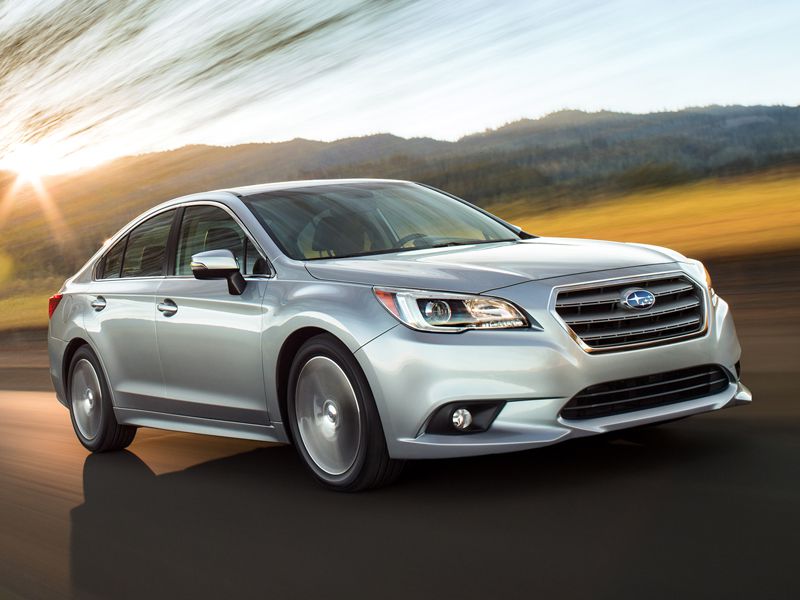
Photo by Subaru
2016/2017 Subaru Impreza
It’s model changeover time for Subaru’s small-car lineup, which means the company will be offering two compact cars with boxer engines during this calendar year. The current entry, the 2016 Subaru Impreza, checks all the boxes for the brand’s most important advantages—from superior NHTSA and IIHS ratings to standard symmetrical all-wheel drive and, of course, a boxer-style four-cylinder powerplant. The one for the Impreza puts out 148 horsepower and 145 lb.-ft. of torque, along with fuel-economy grades as high as 28 mpg city/37 mpg highway/31 mpg combined. Then, later this year, the brand-new 2017 Impreza is expected in dealerships, in both sedan and five-door hatchback body styles, and boasting increases in size, safety and performance. The Impreza’s revised 2.0-liter boxer engine will feature direct injection for a bump in horsepower, while the car’s new tech content will be highlighted by Apple CarPlay and Android Auto smartphone integration.
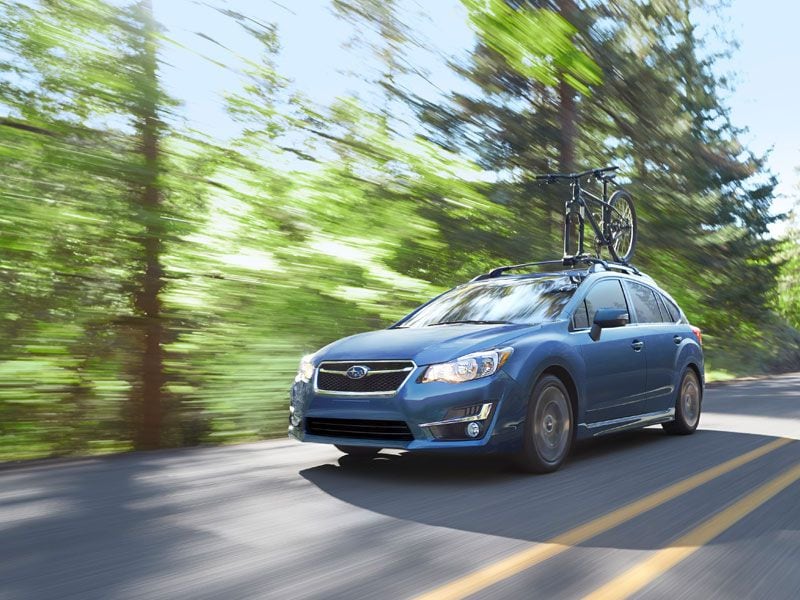
Photo by Subaru
2016 Subaru WRX
Cars with boxer engines can leverage their lower centers of gravity to raise handling limits, and that really comes into focus with the 2016 Subaru WRX. Though based on the Impreza, the WRX results from a rally-inspired makeover that makes the most of the brand’s long history of international racing success. At the starting line: the same 2.0-liter, four-cylinder engine as in the standard Impreza, but with a turbocharged boost to 268 horsepower and 258 lb.-ft. of torque. Yet even with the unabashed performance positioning of the WRX, the car can be kitted out with many of the brand’s top safety and multimedia technologies. Specifically new for 2016 are a standard STARLINK multimedia system and an available EyeSight driver-assistance bundle, complete with blind-spot detection, lane-change assistance and rear cross-traffic alert. Indeed, the WRX is explicitly covered by the Impreza’s IIHS Top Safety Pick+ recognition.
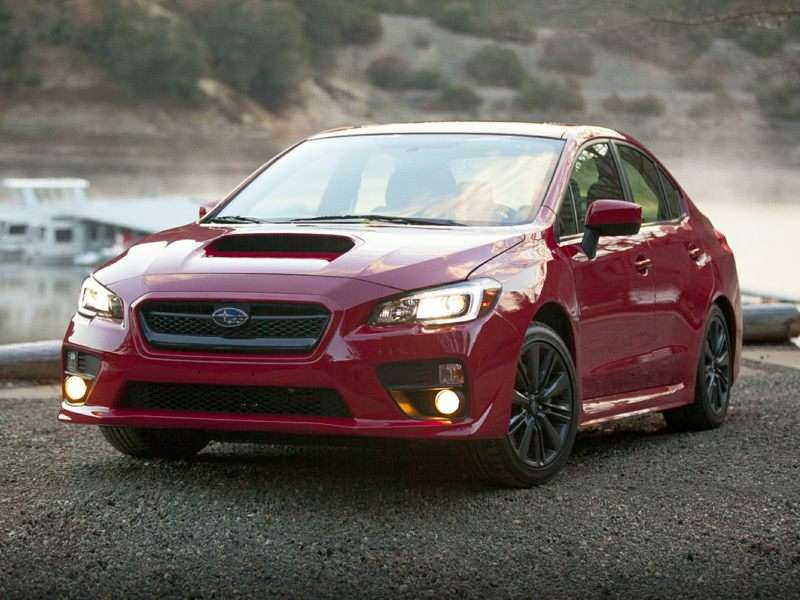
Photo by Subaru
2016 Subaru WRX STI
A storied name in the sport-compact ranks, the 2016 Subaru WRX STI opens a new chapter in the brand’s performance history with a turbocharged 2.5-liter boxer engine that can deliver 305 horsepower, 290 lb.-ft. of torque and 0-60 times well under 5 seconds. The same team that designs Subaru’s racecars—helping the WRX STI win three previous World Rally Championships—also worked their magic on the production version, deploying sophisticated, enthusiast-oriented technologies like a multi-mode, driver-controlled center differential, a multi-mode vehicle-dynamics system, active torque vectoring, and Brembo brakes. Naturally, exterior cues include a massive rear wing, although a more subtle version is a no-cost option for drivers who want to maintain a low profile. Those folks also should stay away from Series.HyperBlue limited-edition WRX STI, since its electric exterior finish means it stands out even further.
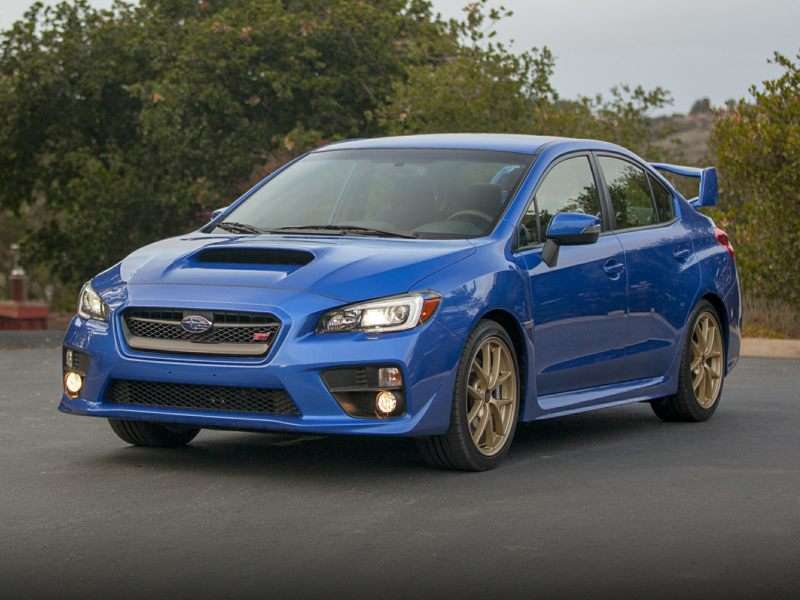
Photo by Subaru
2016 Subaru BRZ
A partnership between two automakers—Subaru and Toyota—has led to the launch of three relatively inexpensive sports cars with boxer engines, including the 2016 Subaru BRZ. Needless to say, it was Subaru that supplied those units, with engineers developing a 2.0-liter, four-cylinder motor that makes 200 horsepower and 151 lb.-ft. of torque. The BRZ is bolstered by other Subaru exclusives as well, such as a standard STARLINK multimedia system with access to mobile apps, Bluetooth connectivity and a 6.2-inch touchscreen, the latter of which serves as a display for the car’s newly standard rearview camera. And while the brand’s symmetrical all-wheel drive didn’t make it into the BRZ, the sleek and curvaceous coupe does join the WRX STI in offering a limited number of Series.HyperBlue special editions, all wearing that eponymous shade of blue and bolstered by a complementary cabin color.

Photo by Subaru
2016 Scion FR-S / 2017 Toyota 86
Toyota’s decision to drop the Scion brand will see dealerships pick up three new models in coming months, with the 2016 Scion FR-S, for example, transitioning to the 2017 Toyota 86. The car gets more than a name change, too. The automaker also has refreshed the design, perhaps most notably by updating the 86’s exterior lighting. The new setup features reconfigured LED headlamps, turn signals and taillamps to modernize its traditional sports-car proportions. In the cabin, occupants will find more soft-touch materials, plus there are performance enhancements for drivers who would rather shift for themselves: Thanks to fine-tuning by Toyota engineers, the 86 will serve up 205 horsepower and 156 lb.-ft. of torque, for a bit of an output advantage over the similar sports cars with boxer engines from Subaru and Scion. (Also joining for the 2017 selling season will be the iA subcompact sedan and iM compact hatch.)
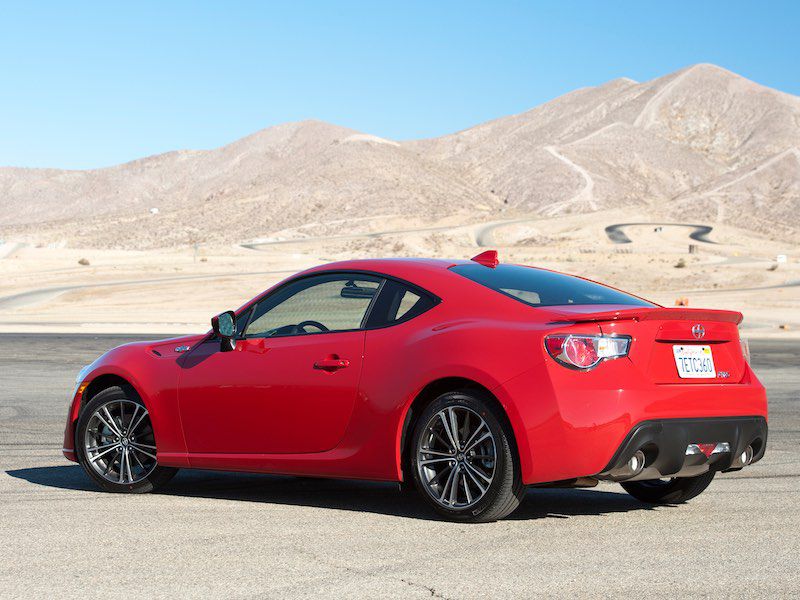
Photo by Scion
2016 Porsche 911
The Porsche 911 is an icon among cars with boxer engines, packing those powerplants ever since the original was introduced in 1963. Flash forward to the 2016 Porsche 911, and the latest high performer to wear the 911 name has tacked on twin turbos to a brand-new 3.0-liter flat-six powerplant. Backed by that 370-horsepower engine, the entry-level 911 Carrera can run around Germany's famed Nürburgring racetrack—a popular testing ground for the world's top sports cars—some 10 seconds faster than the previous generation 911. Porsche pilots also will see the same kind of performance increases throughout the refreshed 911 lineup, including in the soon-to-debut 2017 Carrera 4 that will feature a re-engineered all-wheel-drive system to outrun its RWD counterpart. Feel the need for more speed? The 911 Turbo S clocks in with a terminal velocity of 205 mph and 0-60 sprint time of a mere 2.8 seconds.
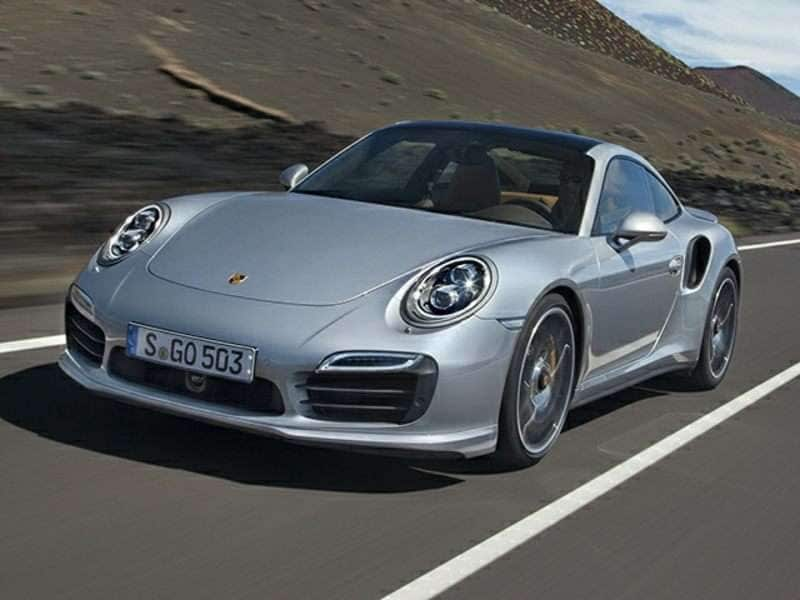
Photo by Porsche
2017 Porsche 718 Boxster
Porsche's preference for cars with boxer engines also led to the creation of the Boxster—as you might have guessed from the vehicle's name, a portmanteau word combining "boxer" and "roadster." And even though the recently refreshed generation will be known as the 2017 Porsche 718 Boxster, those new numbers actually honor a classic flat-engined sports car from Porsche's past. That said, the 718 Boxster's newest powerplants are modern marvels that use turbochargers with variable turbine geometry for serious jumps in outputs and efficiency. The 718 Boxster S is fitted with a 2.5-liter, four-cylinder unit that forces out 350 horsepower and can high-tail it from 0-60 in as few as 4 seconds. The appearance of the car has been restyled as well, as designers continue to show very un-boxy cues for Porsche's revved-up roadster, and the cabin targets today’s drivers by welcoming a standard Porsche Communication Management infotainment setup.
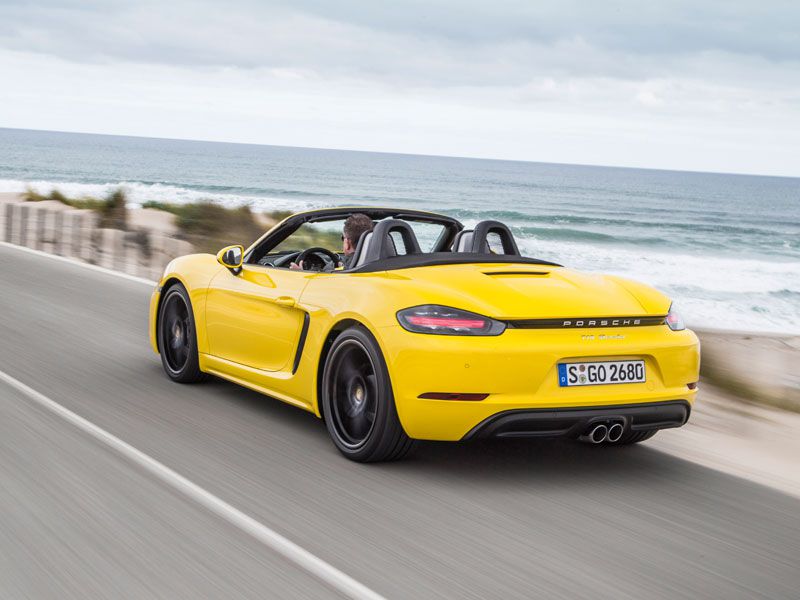
Photo by Porsche
2017 Porsche 718 Cayman
Unsurprisingly, the fixed-roof sibling of the Boxster will showcase the same updates as the drop-top, right down to a modified name. Yet the 2017 Porsche 718 Cayman will provide one vital difference from the Boxster—besides its top—and it's one that customers have been clamoring for some time now: The Cayman finally will cost less than the convertible. The 2017 Boxster bows at $56,000, but the Cayman comes in at $53,900, for a steep $2,100 discount; traditionally, coupes are priced lower than open-air versions of the same car, but this is the first time Porsche has used a similar MSRP strategy for this pair of cars with boxer engines. Nor is that the only good news for coupe customers. For 2017, the brand also furnishes go-fast goodies like a Porsche Active Suspension Management “Sport” setup for the first time with the Cayman.
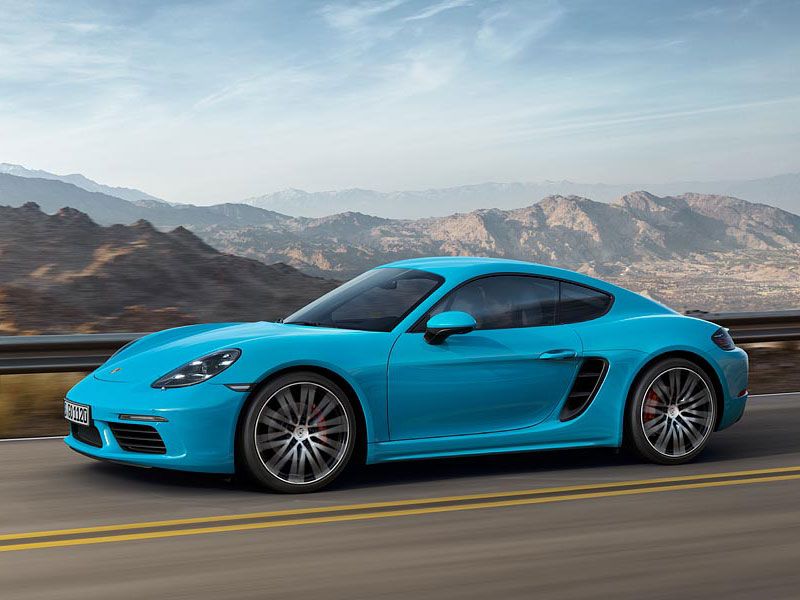
Photo by Porsche